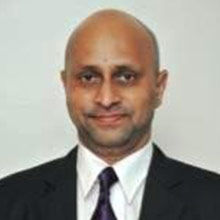Project management is defined as the application of knowledge, skills, tools, and techniques to project activities to meet project requirements and organizing and managing resources so the project is completed within defined scope, quality, time, and cost constraints.
Project management involves planning, organizing, and managing resources to bring about the successful completion of the project. Following is the framework which is generally followed for successful project management:
The primary challenge of project management is to achieve all of the project goals and objectives while honoring the preconceived project constraints. Typical constraints are scope, time, and budget. The secondary - and more ambitious - challenge is to optimize the allocation and integration of inputs necessary to meet pre-defined objectives.
In the Project execution stage, multiple agencies work together on parallel activities. The challenge lies in constant monitoring of each activity, quality check, and taking mid-course correction if required, enabling an efficient and smooth implementation of the project.
There are 3 major steps to be followed for project management:
1. Pre-designing
2. Project Management
3. Construction Management
Pre-designing
In pre-designing, various activities like Site plan, Master Planning, Drawings for Statutory Approvals, Utilities Data Collection, Design Conference, Basic Data Fixation etc. is taken care of. Preparation of Master plan is done by exploring the various possibilities and aspects for the suitable development of the site, from the point of view of Industrial planning and architectural design to be shown in a site plan, considering effective use of climatology and natural site gradients & overall planning by giving due considerations to man, material and management. The built-up area is fixed by considering various units, utility area, ancillary buildings, power plant etc.
The prime focus should be given on a ―Design conference where all the stake holders such as the client, Consultants and suppliers contribute to finalize all variables of the project after considering all other options. This conference needs to be organized to arrive at building and utility and machinery details from all suppliers & their recommendations and to freeze all design parameters. As per approved data of individual units and master plan during design conference, a basic data fixation report should be prepared, which would be referred to as a bible and would forms the basis for further designing & planning, covering built - up area, statement of utility requirement for machinery, building specifications, utility requirement and equipment specifications, design conditions, time schedule and budget.
Project Management
Project management revolves around the objectives of scheduling, effectively estimating cost, working out cost benefit analysis, preparing file note with single line diagram, preparation & evaluation of tender, prequalifying & approving contractors, giving recommendations and preparation & submission of design & working drawings.
The geo-technical analysis of the proposed site needs to be carried out with particular regard to size, surface, shape and level conditions, load bearing capacity of subsoil and surface water conditions, water supply, yield of wells, interpretation of water analysis, drainage, disposal of rain water & waste water and industrial effluent, electric power connections, climate and meteorological data, rainfall, velocity & direction of prevailing winds, municipal/ local rules & regulations etc. If, in the course of investigation regarding water supply, load bearing capacity of sub-soil and sub-soil water conditions, it is found necessary that civil work like excavation pits, boreholes or load tests has to be carried out, the same will be carried out. If an up-to-date contour plan and survey map is not available it should be arranged accordingly.
Based on geotechnical analysis of the site and master plan prepared, architectural drawings should be prepared for infrastructure, production buildings and ancillary buildings. Architectural drawings include plans, sections, elevation, doors & window schedule for each building and necessary details for implementation. Structural design and detailed drawings includes static calculations of reinforced concrete or steel construction for buildings, preparation of structural GA drawings, preparation of RCC designing and drawings. Utility systems need to be effectively designed to arrive at an appropriate system, detailed design, scheme drawings and layout drawings.
Following is the sequence of activities to be followed for Project Management:
The work needs to be closely supervised to ensure timely completion as well as to ensure quality. Schedule of work for each contract should be monitored. Adequate resource should be deployed at site. Monthly progress report should be prepared covering cost, critical decisions and progress achieved by collecting site reports for material, labour, work progress. The list of drawings issued and diary of important events should be maintained.
Construction Management
Construction management revolves around the objectives of resource planning, micro scheduling & orientation, site supervision, risk assessment and management, safety & security measures, material control, quality control, cost control and successful implementation.
Following are the activities to be followed for Construction Management:
Major Reasons for Project Failures/Delay
Project, if not planned properly, can fail or get delayed indefinitely. Some of the major reasons for project failures or delay in execution are inadequate project planning, poor scheduling of projects leading to delays in implementation, misallocation of funds, lack of accountability and transparency, Lack of defined, clear, or concise requirements, bureaucracy in decision-making, weak monitoring systems, lack of team work etc.
These reasons can be overcome by improved project management which would effectively resolve most of the issues faced by the project investor in implementation of the project.
Need of Improved Project Management
Better project management leads to better predictability leading to commitments that can be met. Lower cost can be achieved through reduced rework, better resource management and better planning. Quality is improved through proper quality planning and control. Project management aids in better visibility into project health and state leading to timely intervention and also helps in better handling of risks reducing the chances of failure/delay. All this put together leads to higher project investor satisfaction and self and organization improvement. This can be achieved by appointing a proficient project management team within the organization or a professional project management consultant outside the organization.
Importance of Project Management Consultant
A project management consultant has practical experience of setting up various projects and complete knowledge of the project execution along with the intricacies involved while implementing a project. The consultant is cognizant of the systematic process for managing a project and is able to answer crucial queries like the goal of the project, the need for the project, the beneficiaries of the project, probable obstacles in the project execution etc. With effective communication and good interpersonal skills, a project management consultant can efficiently co-ordinate between various vendors and the project investor delivering the project within the prescribed time schedule and with optimum budget.
Implementing a project within prescribed schedule, with insignificant deviations from budget and maintaining appropriate quality enable the project investor in saving around 5-10% of the project cost.
Summary
To summarize, project planning is the key for executing any project within cost estimates, timely execution and avoiding repetitive work and delays. The precision needs to be taken while planning, designing and implementing any project. As there are various independent factors involved in project management, a right and omniscient consulting firm having relevant team with knowledge of project execution should be appointed which can assist in giving most favourable end-to-end solutions for any project.
Avinash Mayekar is the MD & CEO of Suvin Advisors Pvt. Ltd.








Comments